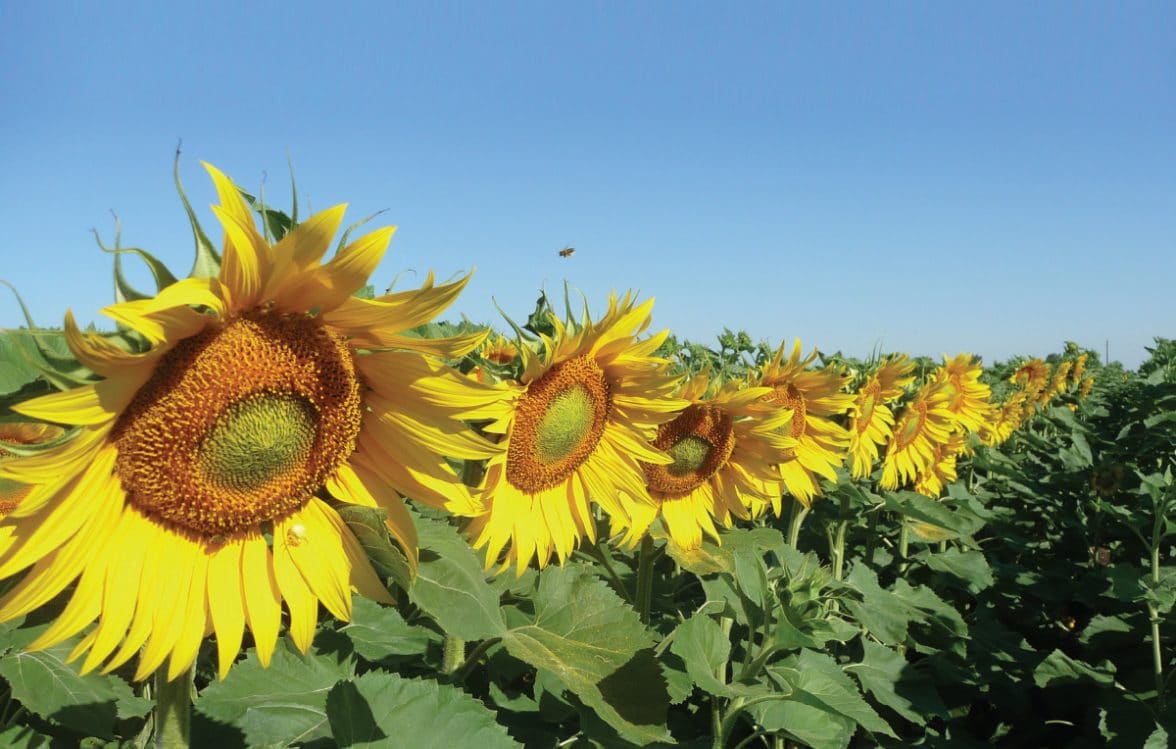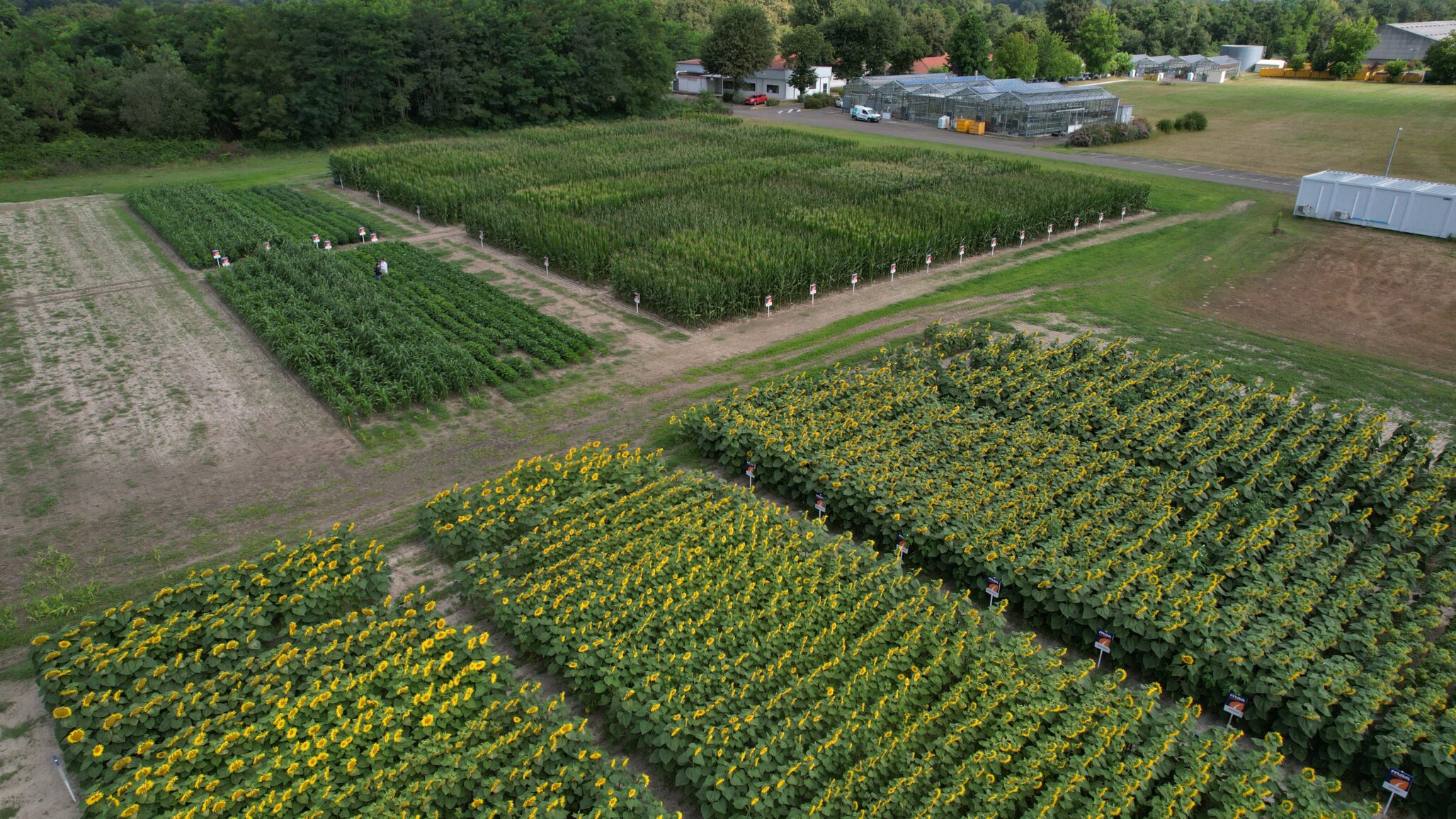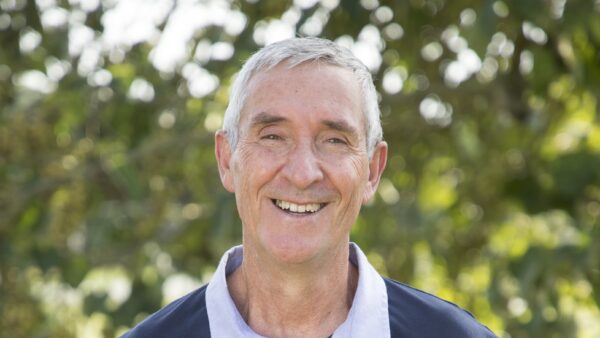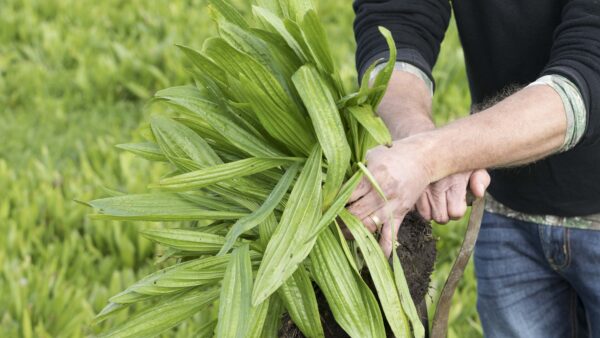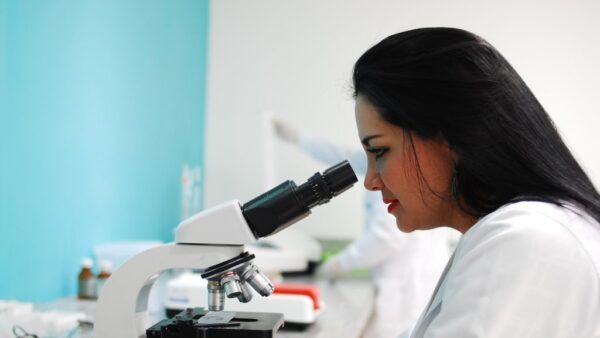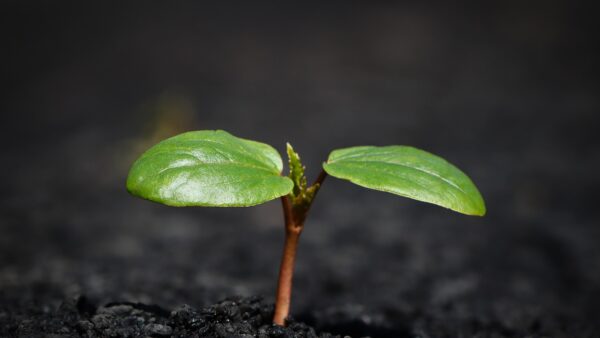Sunflower breeding experts share what is important in creating new varieties for the marketplace.
Hamdi çiftçiler is May Seed Turkey’s vice-president
Branislav Dozet is Syngenta’s head of Sunflower Breeding
Constantin Jansen is Strube Research’s head of Product Line Sunflower
Richard Legrand is Limagrain’s European Oilseeds Crops Markets manager
The sunflower is recognised worldwide for its beauty, however, it is also an important source of food. Sunflower oil is a valued, healthy vegetable oil, and sunflower seeds are enjoyed as a nutritious ingredient in many foods as well as a tasty snack. As sunflower is an important agricultural crop choice for many producers around the globe, European Seed is taking a closer look at breeding new sunflower varieties with Syngenta’s Branislav Dozet, Limagrain’s Richard Legrand, Strube Research’s Constantin Jansen, and May Seed’s Hamdi çiftçiler.
Breeding Targets
European Seed: As in many other crops, the main breeding targets for sunflower in Europe are still yield and disease resistance; however, there now appears to be a more diverse picture than in the past.
Branislav Dozet: Although yield remains the main target, segmentation of the sunflower market in the past few years has changed breeding targets. Introduction of high oleic and herbicide tolerant traits make breeding much more complex than before.
Today, we have five main targets: yield and yield stability, disease resistance, oil quality, drought and heat stress, and herbicide tolerance. Overall, across all segments, grain and oil yield remain the priority targets. High-yielding products still drive any new technology introduced in sunflower breeding.
Constantin Jansen: The first priority of Strube is seed yield, but for that you need to have a good trait package against some diseases—such as broomrape, downy mildew, Phomopsis, Sclerotinia—and herbicide tolerant traits, in addition to better oil content and high oleic varieties.
Hamdi çiftçiler: Harvestable yield is always the No. 1 target for a breeding program. However recent changes by the oilseed industry have led us to pursue the goal of high oil yield per hectare. After yield, disease and pest resistance and herbicide tolerance are always high on our research priorities.
In Turkey, the parasitic plant Orobanche is a key pest. We have an aggressive breeding program for resistance to broomrape, which is also a very big problem for the world’s most important sunflower-growing countries, such as Russia, Ukraine, Romania, Bulgaria and Spain. May Seed uses both conventional pathology-assisted breeding and marker-assisted breeding to stay ahead of the ever-changing races of the broomrape parasite.
We combine conventional herbicide tolerance technologies with genetic broomrape resistance and downy mildew tolerance, which creates excellent safety for farmers who grow sunflowers in the above geographies to fully secure their sunflower crop against the broomrape parasite, weeds and early-season downy mildew risk. We also established a special SmartOR platform for such combinations.
Richard Legrand: Nowadays it is not enough for seed companies to focus only on breeding for yield. Due to changes in the climatic conditions, there is a shift of risk. We can list the increased aggressiveness of broomrape, territories exposed to drought or the gain of importance of black rust and Verticillium. Breeding companies should be looking proactively for innovative solutions, and anticipate the future risk. For Limagrain’s breeding program, yield, oil content, and fatty acids profile, such as high oleic or linoleic, are crucially important. Resistance to mildew and other diseases—such as Phomopsis, Sclerotinia, Verticillium and Phoma, but also to Orobanche—and herbicides are key to have.
Our main target is to propose genetic solutions to farmers that improve the profitability of the crops on their farms. That could be through high-yielding high oleic hybrids grown under contract, which give rise to a premium, in most of the cases. It could be through Orobanche resistant varieties, which control the parasite in the field. However, it could also be through excellent disease profile varieties.
Yield Increases
ES: With yield arguably being the most important feature for farmers, yield increase becomes one of the main breeding targets for plant breeders. Comparison with other crops shows yield increase of sunflower over the period 2000 to 2013 has been relatively high, and, in fact, better than other oil crops.
BD: Indeed yield gain is very important, but it’s not the only factor keeping the crop competitive. Following our trial results, yield gain is around 1.2 per cent per year. But we must look where the main production of sunflower is located. In Russia and Ukraine sunflower is still considered an extensive crop with low inputs but tolerant to heat and drought.
It means yield gain achieved by breeding efforts is not really reflected at the farm level. We usually call it yield gap at farm level or farm gate. However, sunflower still remains the main cash crop in those areas. We expect introduction of new technology such as Clearfield will significantly help a farmer improve control of weeds, broomrape, and decrease the farm yield gap.
To help farmers increase their yields at the farm level, we allocate our breeding efforts to introducing new traits in our breeding materials. Even though we primarily breed for yield, we should never forget that sunflower is an oil crop, and oil content in seed is also very important. What the oil industry prefers is high-yielding and high-oil hybrids with stability over the years in different geographical regions. Believe me, it looks like an easy task, but it is not easy to achieve.
RL: Sunflower is often cultivated in a more difficult environment than other oil crops. Due to this specificity, farmers achieve the full potential of the genetics less frequently. It is the reason why flexibility of genetics is so key for this crop.
Regional Differences
ES: With respect to yield increase, are there differences among regions?
CJ: Certain areas have a bigger yield increase than others, such as Eastern Europe. In these areas, hybrids are compared with open-pollinated varieties of the recent past, and this offers yield increases up to 20 per cent.
In Western Europe, the yield increase over the last 20 years has been relatively flat because breeding programs have been more focused on diseases, herbicide tolerance and oil content gains. Certainly there are regional differences, where yield increase is larger than in other areas, this is not the case everywhere.
HC: In Turkey, yields have not changed much over the past few years due to the heavy focus on defensive breeding to defeat the ever-changing races of diseases and pests. In addition, sunflowers in Turkey are largely grown in a dry climate and rely on a steadily depleting water supply during the growing season. Thus, disease and water supply generally limit the yield of sunflowers.
ES: Does each region require its own sunflower varieties?
CJ: There are big differences between countries, and also within a country, mainly related to maturities, diseases, abiotic adaptations, et cetera.
RL: Sunflower shows lots of plasticity. Breeders are establishing idiotypes for larger geographical units which are homogenous for
specific criteria.
HC: In Eastern Europe, with a more continental climate and more humid summers, disease resistance is very important. In dryer areas, such as Turkey, Orobanche and drought tolerance are the more-needed traits.
BD: It is not possible to develop hybrids for every village of course. Before you start your breeding program you need to target the adaptation area. Wider adaptations of the hybrids are very important but unfortunately you cannot develop one product that fits in every environment. Having good knowledge about biotic and abiotic factors affecting hybrids in particular regions are preconditions to predict adaptation of the products. I can give you example. Products developed for Spain can be well adapted for Turkey or Eastern Russia. But it is never a “copy & paste” option. You always have specificity of each region. At the end hybrid adaptation trials across regions will give you the right answers.
Pests and Diseases
ES: Sunflower is considered a paradise crop for phytopathologists. What are the most important pests and diseases affecting sunflower, and what is considered top priority for breeders?
CJ: The most important diseases affecting sunflower are broomrape and downy mildew. There are not many new diseases developing in sunflower, however, breeders focus on the development of resistances against new races or pathotypes of existing diseases.
BD: Breeding is usually a big battle between pathogen race development and new gene discovery, and the subsequent introduction into hybrids to control particular races. Sometimes we rely on chemical solutions, but, in general, the target is genetic control of the disease. Race changes can be so fast that we can’t discover and integrate a new genetic resistance or tolerance, accordingly. Then crop protection products may be a key solution. One example is broomrape, where we see such intensive race changes in different geographical regions, and that’s exactly where our company’s technology holds a key solution to control broomrape. It’s a combination of genetics and herbicides.
HC: While no new diseases have been discovered over the past few years, current diseases continually change, and we need new resistance genes. The most important diseases to us are downy mildew, Phomopsis, Alternaria and the parasitic plant Orobanche.
RL: The seed industry is in agreement, in Europe the most important is to win the race against broomrape. Limagrain launched its absolutely original technology called SUNEO. Thanks to this innovation the very first hybrids including strongest broomrape resistance together with herbicide tolerance are reaching European farmers. This new solution is bringing durability in the resistance.
ES: What role does geography play in disease?
BD: In Europe, we have many diseases, but few of them are significant. The main ones are stem canker, downy mildew, white mould, charcoal rot, Verticillium wilt, and, finally, broomrape.
Meanwhile, in India for example, you do not have any of those, but you have viruses, powdery mildew and Alternaria leaf blight. If you look toward South Africa, you have issues with white rust. In the United States, among others, black rust can also be very important.
If you want to be a global leader in breeding, you must consider all of them, and breed for tolerance or resistance. Some genetics work differently on the same disease in different geographic regions, making breeding even more complex. Some European hybrids work well in India, but without resistance to viruses and powdery mildew, and tolerance to Alternaria leaf blight, it is useless to have them there.
RL: Sunflower finds its origins in the American continent. The biggest challenge for breeding is to find newer and newer sources of resistance or tolerance, while in the region of origin the species wasn’t exposed to these pests and diseases. Therefor it is not evident to find resistance or tolerance mechanisms e.g. for broomrape.
Plant Oil Markets
ES: Of all crops, palm oil is dominant in the oil market today because of its high productivity per hectare. There is no field crop that can compete with palm productivity. However, as several large markets, such as the United States, are moving away from palm oil, this opens up opportunities for other oil crops. In addition, the production increase of oil crops has been largest in the United States, Brazil and Argentina, mainly due to soybean. Do you foresee plant oil markets changing in the near future?
CJ: Looking at field crops on a global level, soybean is still the most important crop, however, due to the ban on GM soybean cultivation in the EU, it is sunflower and oilseed rape that are increasing in numbers in Europe.
Sunflower is currently the main oil crop in both western and Eastern Europe. In Russia and Ukraine together there are already around 12 million hectares, which is 60 per cent of the total world acreage, with second position for oilseed rape.
RL: The production areas of oil crops are quite stable in Europe, with a small expected decrease for winter oilseed rape, and a small expected increase for sunflower. This is in connection with the positive trend of high oleic sunflower oil, which is in increasing demand by the fried foods industry. It should be noted that today’s oil market is huge and segmented. The oil sector remains very demanding. We should not forget, the socio-political environment also plays a big role and seed companies has no means of influencing that. For example, Latin America is producing for export and with the new president in Argentina, we can expect changing the trend of the sunflower surface and after so many years of decreasing, see some increase.
BD: Every oil crop has its own place in the market today, including sunflower, of course. I see many opportunities for sunflower, especially in the development of the high oleic sunflower oil segment. In addition, we should not forget that sunflower meal is also a very important part of the sunflower crushing industry. We also see more and more sunflower lecithin used for chocolate.
Consumption of oil is very locally oriented, depending on where a particular crop dominates; for example, palm oil in Asia, soybean oil in the United States and Latin America, canola oil in Canada, Germany and Poland, and sunflower oil in eastern and central Europe. This relates to the traditional usage of a particular oil. Many consumers in Russia, for example, love to consume cold pressed sunflower oil with the strong aroma of the sunflower kernel. Meanwhile, in other parts of the world, such oil will not find a place in the market. Also, it is a tendency of the oil industry to produce oil mostly for its original usage, for example, deep frying oil, salad oil, et cetera.
ES: Is it challenging for sunflower to compete with other oil crops, especially soybean in Latin America?
BD: One of the main reasons why soybeans increased so much in that part of the world was the introduction of GM varieties, which gave a clear advantage to soybean over sunflower. It is different in Europe. Being a relatively small crop compared to corn or wheat, for example, development of herbicides for sunflower was below the needs of the crop. Hence, sunflower started to lose competitiveness in the market, but it remains a major player in dry areas. After development of herbicide tolerant technology, sunflower again became competitive to other crops.
Technology, such as Clearfield, allowed farmers to have a good post-emergent herbicide with double effect: control of major weeds and broomrape control, which is problem No. 1 in many European countries, such as Spain, Turkey, Romania, Russia, Ukraine and Bulgaria. It really brings back sunflower’s competitiveness to other spring crops.
An Important Discovery
ES: It has been 40 years since the discovery of the high oleic trait. What’s the importance of that finding?
BD: Discovery of the high oleic trait placed sunflower oil in the category of healthy oil, differentiating this crop from other oil crops. There is not one field crop today that has a similar content of oleic acid to match high oleic sunflower, which usually ranges from 84 to 90 per cent.
Practically all of the United States market is the mid-oleic and high oleic market, while more than 60 per cent of the French sunflower-growing area is planted with high oleic sunflower. Demand for high oleic sunflower increases year by year, especially for export-oriented countries, like Ukraine.
HC: The cooking and health advantages of sunflower oil certainly give rise to opportunities for the crop to increase in status and surface in eastern Europe, Mediterranean and Middle Eastern countries where water supply is limited.
From Open-Pollinated to Hybrids
ES: Many crops have been turned from self-pollinated or open-pollinated into hybrid crops, and sunflower is no exception.
HC: Sunflower is a hybrid crop in its current form. Sunflower breeders utilise a cytoplasmic male sterility system to produce hybrids, similar to corn, sorghum, cotton, and onion crops.
CJ: Only in Russia and Ukraine—taking into account the large quantities there—are open-pollinated varieties for sunflower still very important; however, step by step, all acreage is moving to hybrids. As most breeders know, it is always easier to bring open-pollinated crops, than self-pollinated crops, to a hybrid production system. But even in self-pollinated crops, such as barley, it is possible.
BD: Sunflower, even as an open-pollinated crop, is different than corn, for example. Corn is a monoecious plant, where the sexes are partitioned into separate organs—pistillate (ear), the female flower and staminate (tassel), the male flower. In a practical sense, it means you can physically remove the tassel and easily create a hybrid, but you can also do the same based on male sterility.
Sunflower is quite different. Both female and male parts are located in the same flower. Physical elimination is impossible except on a breeding scale. We waited a long time until one French scientist—Leclercq in 1969—discovered a proper male sterility system for sunflower, which fits production scale. There are many benefits of hybrid breeding compared to variety breeding, and probably the most important one is the heterosis effect.
Exciting Times
ES: Why is it breeders find it exciting to work with sunflower?
BD: A really great era for sunflower breeding started in the mid-80s when it became a hybrid crop. Sunflower’s genetic diversity is its big advantage. In the United States it was known as a crop plant for many years by the native Indian tribes there. The sunflower genus contains 49 different species. This gives breeders a great opportunity to utilise such divergence in different breeding programs, especially for disease tolerance traits.
There are plenty of examples in breeding where discovery of the genes in wild relatives solved major issues with certain diseases.These wild relatives are common today almost everywhere in the United States, and adapted for different environments. It still remains a fantastic pool for different breeding targets, for example, drought tolerance, photosynthesis efficiency, insect tolerance, fatty acid composition, et cetera.
We also have one well-known sunflower species in Europe with the domestic name Jerusalem artichoke, often called topinambur. Many people use it in everyday life, not knowing it is also part of the sunflower family. But scientific work is not the only great aspect of sunflowers— let’s not forget this crop has inspired many artists, the best known being Van Gogh.
Sunflower in the Ukraine
ES: We feature the Ukrainian seed sector in this issue. Sunflower oil production is greater than its consumption in Ukraine and is the only net exporter of sunflower oil. What else makes sunflower a good crop for that country?
CJ: It’s a traditional crop there, very well adapted and has high yields due to amazing soil quality and good weather conditions during the sunflower vegetative period. A large part of Ukraine has a typical continental climate, with cold winters and hot summers.
BD: In Ukraine, it’s a low input and profitable crop, usually called a cash crop due to yield stability, especially in dryer areas. The country has a long tradition of growing sunflower and is part of Ukraine’s culture and folklore. But we must also be careful to bear in mind that oversizing a crop can also cause issues with technology. Crop rotations still need to be followed and mono-cropping is not recommended for sunflower.
RL: Ukraine is the second country in Europe for sunflower production after Russia, with an excellent average yield. The country has a strategic position to export sunflower commodities, thanks to its Black Sea facilities either to western or eastern countries with good competitiveness.
Investment Needed
ES: Creating a new hybrid sunflower variety is a long process, and from discovery to commercial stage it usually takes several years. The investment needed to create a new sunflower variety varies per company. What’s involved in creating a new sunflower variety?
BD: The process of creating a variety, on average, takes around 10 years. Marker-assisted selection can speed up the process, but you still need to test products, and go through the registration process. Today, breeding is really all about team work. To develop a new variety, you need to have genetic variability; available traits; and motivated, experienced and well-educated breeding teams supported by many other functions, such as production, portfolio, and marketing and sales.
You must develop technology that can significantly increase breeding efficiency. Every function in this process has, more or less, equal importance. Development of one product is costly and needs to be well planned in order to bring in a return on investment and create profit for the company.
HC: We are fortunate in Turkey that we can run two full nurseries a year in the field and three seasons in the greenhouses. We believe from idea conception to bringing a product to market, including the registration process, takes us at least eight years, and over €500,000 to develop one hybrid. This number does not include the heavy investment we have made in state-of-the-art greenhouses, pathology, and marker labs.
CJ: It takes about €1,000,000 per year, over 10 years, to yield a minimum number of new hybrids to maintain an interesting portfolio.
RL: Part of our continuous improvement efforts is to reduce the time to reach the market with an innovative product. Each step of the process can be challenging. It depends how efficient we can incorporate genome wise selection, new phenotyping and high throughput genotyping technics.
Sunflower Breeding Innovations
ES: Sunflower may be a great crop to work with, but it still appears to be behind other crops, such as corn, wheat, soybean, rice and cotton, in terms of importance and investment.
CJ: Companies look at the development of new technologies in other crops, and based on their own possibilities and priorities, try to adapt and implement it in sunflower breeding.
RL: While zooming in on patentable innovation, exclusively in the sunflower domain, we see very little work. One of the unique topics is broomrape.
BD: Often sunflower becomes a pilot crop for some projects. If the task is complicated and needs more resources, then international research consortiums are needed to support such projects. I can point to two such examples—high-quality genomic sequencing and the development of the efficient dihaploid system in sunflower. Such innovations will help breeding move forward in the predictive breeding era. It is not there today, but I think it is not far away.


